
Student Spotlight: Janey Keirs, Diploma in Professional Soft Furnishings & Curtain Making
From Crafting for Fun to a Thriving Creative Business: Meet Janey For some, creativity is a hobby. For others, it quietly weaves its way through every
As a not-for-profit foundation, we are so confident in the price of our Diploma’s that if you can find the same level of education for less, we will match it!

Enrol at any time & choose your start date. No term times or semesters.

No previous qualifications required! Age 16+ and an interest & enthusiasm for soft furnishings & interior design.

Online: 10-12 months
Online Fast-Track:
17 weeks
In-Studio: 10 days in studio + 10 weeks home study - total 12 weeks

No exams — Tutor assessment only, portfolio moderation by AIM Qualifications.
This is the ideal course if you want to design and make beautiful hand finished curtain projects for your home, or if you would like to set up your own lucrative soft furnishings business and workroom. These specialist curtain making skills are highly sought after by interior designers and discerning clients. If you have an existing business but don’t have the advanced skills required to offer a hand finished design service, then you can enhance your business by studying flexibly around your existing projects. You can even go on to study a degree.
If the answer is yes… then this is the course you are looking for!
The NDA Diploma in Professional Soft Furnishings and Curtain Making will put you on the path to starting the business you have always wanted. It will also give you the opportunity to study one of our degree courses if you decide you want to push your skills further.
You will study ten dedicated units during this professional diploma
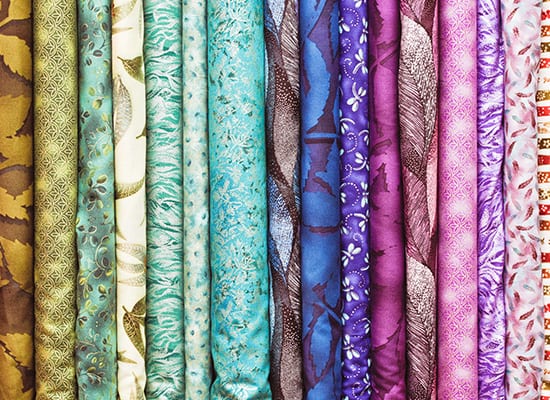
This unit introduces you to fabrics and linings and how to choose appropriate fabrics for curtain or soft furnishings designs. It also sparks your creativity by working with colour schemes, presentation boards and understanding the way colour affects your designs. This unit will underpin all your future projects. This unit also includes:

This unit will show you how to measure windows and how to design window treatments to enhance different styles of window. You will also learn how to estimate fabric quantities for curtains and soft furnishings. These are essential skills you will need before moving onto the sewing & construction methods for curtains and soft furnishings. This unit also includes:
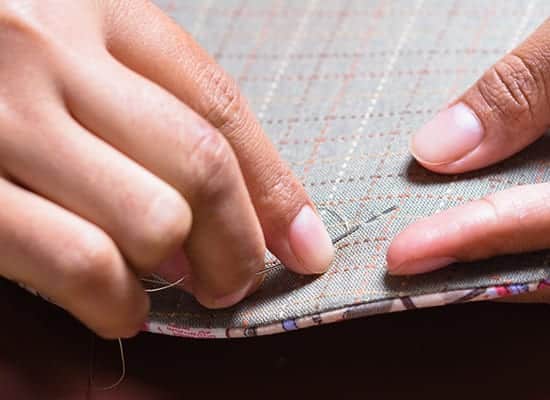
In this unit you will learn how to apply a range of techniques to ensure a professional finish is given to all types of window treatments and soft furnishings. This covers hand stitching, hand covered weights, mitred corners and joining multiple curtain lengths. This unit also includes:
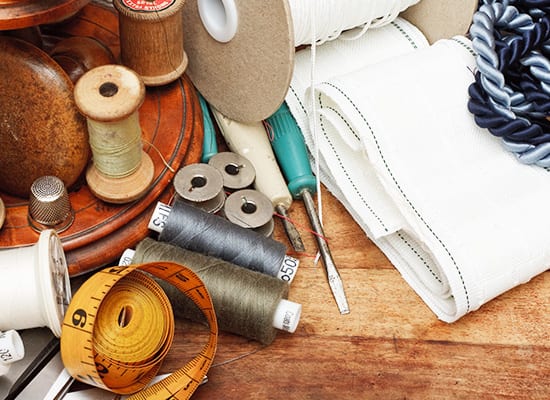
This unit will give you a thorough understanding of the construction of various curtain designs including lining, interlining and decorative trim options with pencil pleat headings. You will apply all the techniques learnt to produce sample sized curtains and know how to transfer these skills to full sized curtain projects. This unit also includes:
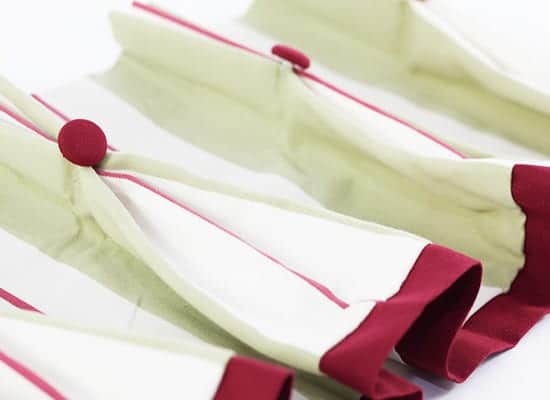
This unit will take curtain making to the next level and you will learn how to apply a range of hand-made headings which can be used for both curtains and valances. You will construct valances with different types of hems and a range of hand-made headings.This unit also includes:
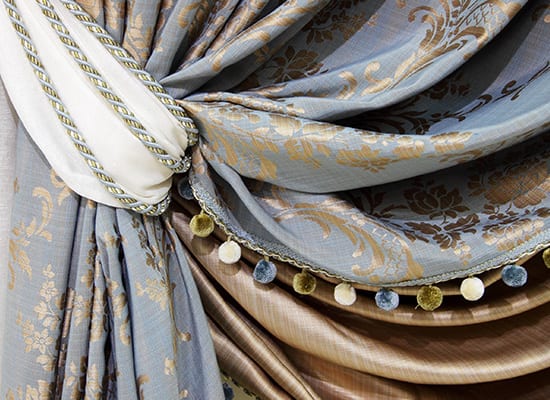
This Unit covers a specific set of sewing skills including how to make piping and how to insert zips. You will apply these skills to construct a piped, crescent shaped tie back plus a piped cushion with a concealed zip. This unit also includes:
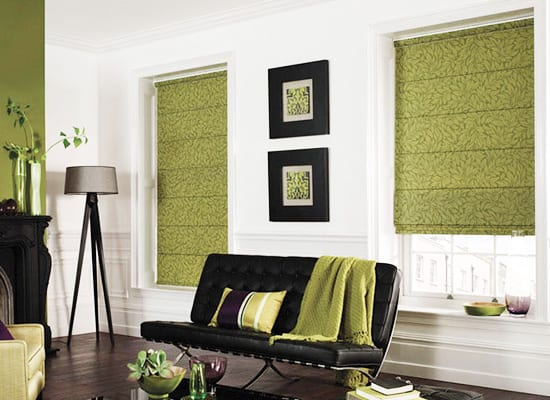
This unit will cover all the skills required to produce a sample sized, lined Roman blind to a professional standard. Learn how to accurately divide the blind into equal sections so the folds are flat with the rod pockets constructed within the lining and no stitches visible from the front side. This unit also includes:
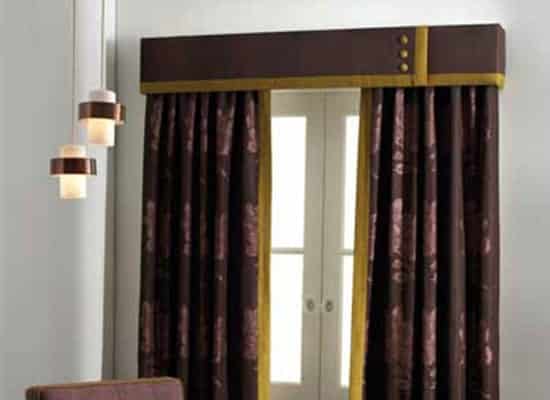
This Unit covers all the sewing skills and techniques required to produce a sample sized, professional padded pelmet. You will also learn how to assess the pelmet proportions to suit the window and the chosen style of treatment. This unit also includes:
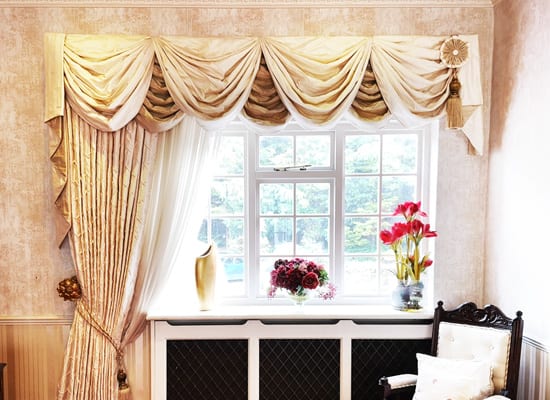
In this unit you will learn how to design swags and tails in proportion to window sizes. You will construct a sample sized, lined swag and tail, and learn the formula for producing swag templates. This unit also includes:
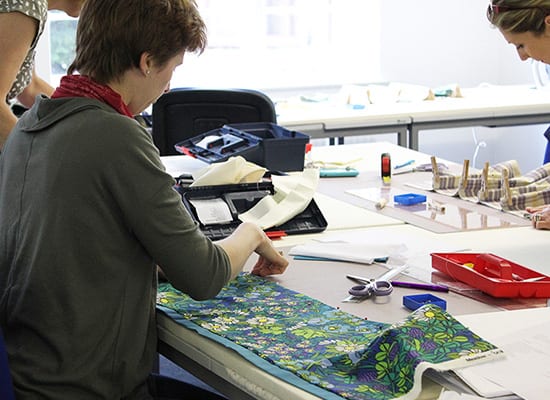
The final unit of the course looks specifically at setting up a professional work room and includes everything you need to know when starting a curtain making & soft furnishings business.This unit also includes:

This unit introduces you to fabrics and linings and how to choose appropriate fabrics for curtain or soft furnishings designs. It also sparks your creativity by working with colour schemes, presentation boards and understanding the way colour affects your designs. This unit will underpin all your future projects. This unit also includes:

This unit will show you how to measure windows and how to design window treatments to enhance different styles of window. You will also learn how to estimate fabric quantities for curtains and soft furnishings. These are essential skills you will need before moving onto the sewing & construction methods for curtains and soft furnishings. This unit also includes:

In this unit you will learn how to apply a range of techniques to ensure a professional finish is given to all types of window treatments and soft furnishings. This covers hand stitching, hand covered weights, mitred corners and joining multiple curtain lengths. This unit also includes:

This unit will give you a thorough understanding of the construction of various curtain designs including lining, interlining and decorative trim options with pencil pleat headings. You will apply all the techniques learnt to produce sample sized curtains and know how to transfer these skills to full sized curtain projects. This unit also includes:

This unit will take curtain making to the next level and you will learn how to apply a range of hand-made headings which can be used for both curtains and valances. You will construct valances with different types of hems and a range of hand-made headings.This unit also includes:

This Unit covers a specific set of sewing skills including how to make piping and how to insert zips. You will apply these skills to construct a piped, crescent shaped tie back plus a piped cushion with a concealed zip. This unit also includes:

This unit will cover all the skills required to produce a sample sized, lined Roman blind to a professional standard. Learn how to accurately divide the blind into equal sections so the folds are flat with the rod pockets constructed within the lining and no stitches visible from the front side. This unit also includes:

This Unit covers all the sewing skills and techniques required to produce a sample sized, professional padded pelmet. You will also learn how to assess the pelmet proportions to suit the window and the chosen style of treatment. This unit also includes:

In this unit you will learn how to design swags and tails in proportion to window sizes. You will construct a sample sized, lined swag and tail, and learn the formula for producing swag templates. This unit also includes:

The final unit of the course looks specifically at setting up a professional work room and includes everything you need to know when starting a curtain making & soft furnishings business.This unit also includes:
A sample of work completed by our talented interior design students
10–12 Months (Flexible)
The online flexible Professional Diploma course is designed to be flexible to allow you to study around your career, family, and other commitments. Choose your own start date and study from anywhere in the world as long as you have an internet connection.
The online diploma is a 10-12 month course however, many students who have more time to study complete earlier. All assignments consist of design projects which are assessed by your Personal Tutor – there are no examinations.
17 weeks home study and weekly online lectures (via zoom)
For students who want all the benefits of remote online learning, but are also looking for more structure and live interaction with tutors and peers, the ‘Online Fast-Track’ course offers an ideal mix.
The course consists of a 10-week study period that covers each of the 10 subject units in the Diploma course, one unit per week. 2.5hr live zoom lectures and demonstarations are organised two days per week. Up to 6 ‘Independent Study’ weeks within the duration let students complete any unfinished assignments.
10 days In-Studio 10 weeks home study (12 weeks total)
If you prefer a classroom-based study environment then our In-Studio blended learning course could be for you. It is particularly useful if you are looking to fast-track your qualification, either for a new career or for progression to degree level study.
You spend 5 days in-studio followed by 5 weeks home study projects, then a further 5 days in-studio with up to an additional 5 weeks to complete any project work for submission. Throughout home study, you have full online access to our resources and your Personal Tutor.
UK residents pay approximately 50% course fees and funding from the UK government will pay the rest.
All NDA Professional Diplomas are accredited by AIM Qualifications. NDA is the only design school to be able to offer funding & student loans because our Diplomas are fully accredited.
There are two ways for UK students to pay for their Online Diploma:
Alongside a computer and an internet connection, there is also essential and recommended soft furnishings equipment required to complete your NDA Course, all available through the NDA Art Shop at student prices!
The Diploma in Professional Soft Furnishings & Curtain Making is designed to help you start your own Soft Furnishings Workroom and Design Service. Like the Diploma course itself, you can work flexibly for your clients around your family commitments and gradually expand your business. You could also study the Professional Interior Design Diploma to offer additional design services to your clients.
Successful completion of your NDA Diploma provides a guaranteed place on one of our online BA (Hons) degrees with a generous Progression Scholarship. Degrees are validated by De Montfort University (DMU).
For those who wish to continue their study at an on campus university, all NDA Professional Diplomas carry a UCAS tariff point value. You can top up any existing UCAS points you may have with points from an NDA Diploma.
Diploma in Professional Soft Furnishings & Curtain Making = 32 UCAS points.

From Crafting for Fun to a Thriving Creative Business: Meet Janey For some, creativity is a hobby. For others, it quietly weaves its way through every
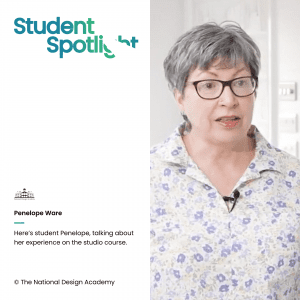
Our Diploma in Professional Soft Furnishings & Curtain Making is the ideal course if you want to design your own projects, help your friends and family
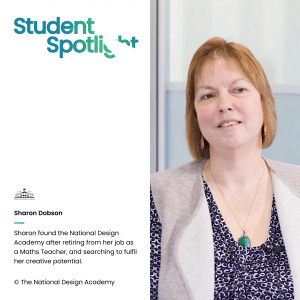
“For me, the beauty of how the course is put together, is you can see your own personal journey” During a recent in-studio course at the
Hear what past and present students have to say about studying at the NDA
UK students pay approximately 50% of the full course fee – the balance is funded by the UK Government’s Adult education budget (AEB).
The National Design Academy is the only design school to be able to offer this funding as our Diplomas are all fully accredited by AIM Qualifications.